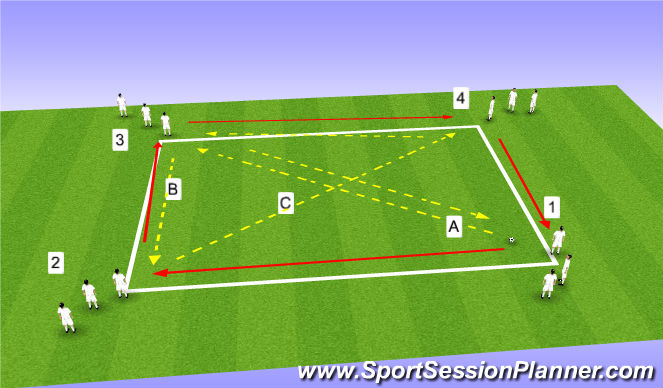

The Morphocycle is the weekly learning plan for the way the team wants to play. This weekly periodization of tactical principles is called the “Morphocycle”. Moreover, the word “periodization” is not used in its traditional sense, in relation to periodizing the physical load of training, it refers to the periodization of the tactical principles trained throughout the week.

In all these aspects considered, the game of Football is viewed in a holistic perspective, maintaining its complex identity.įootball’s dimensions viewed through Tactical Periodization. Tactical Periodization is a training methodology that derives from the study of different sciences and inter-disciplines that apply to football, including neuroscience, theory of complexity, chaos theory, systems theory, physiology, psychology, fractal geometry, and sociology.

While Mourinho is the most well-known proponent of Tactical Periodization, this training methodology has also been adopted successfully, by André Villas-Boas, Brendan Rogers, Nuno Espírito Santo, Marco Silva, Carlos Carvalhal, Vitor Pereira, and Leonardo Jardim, to name a few (Bordonau & Villanueva, 2018) But what is Tactical Periodization? He has since moved on and coached at elite clubs in England, Italy and Spain, achieving significant domestic and European success. From 2002 to 2004, as head coach of FC Porto, he guided the team to two Portuguese league titles, a Europa League title and a Champions League title. Jose Mourinho was an early advocate for this coaching methodology, and one of the first coaches to prove this methodology’s success. Since its creation, it has become one of the most widely adopted and implemented training methodologies worldwide. Tactical Periodization is a football training methodology developed around 35 years ago by Vítor Frade, a sports science professor from Porto University in Portugal. Von guest am in den Kategorien Tactical Theory mit 2 Kommentaren These results were found independent of format and age group.Understanding the Tactical Periodization Methodology Larger pitch sizes can be implemented as a meaningful task constraint to increase the internal and external load experienced by soccer players during SSGs, as well as to increase the dispersion of players while acting together. No significant differences were found between pitch size regarding the numbers of accelerations (p = 0.232 ES = 0.45), decelerations (p = 0.111 ES = 0.85), passes (p = 0.897 ES = 0.02), dribbles (p = 0.823 ES = -0.05), or positional centroid (p = 0.053 ES = 0.56). Results revealed that, compared to smaller pitches, SSGs played on larger pitches induced greater values for heart rate (p < 0.001 ES = 0.50), rate of perceived exertion (p < 0.001 ES = 0.70), total distance (p < 0.001 ES = 1.95), high-speed running (p < 0.001 ES = 1.20), stretch index (p < 0.001 ES = 1.02) and surface area (p < 0.001 ES = 1.54). From those, 41 articles were eligible for the systematic review and meta-analysis. The database search initially yielded 249 titles. The data sources utilized were PubMed, PsycINFO, Scielo, Scopus, SPORTDiscus, and Web of Science. Comparisons between smaller and larger pitches were not considered based on a specific size, but also between using at least two dimensions in the same comparative study, aiming to understand differences between using smaller and larger (independently of the specific dimensions). larger pitch sizes on soccer players’ physiological, physical, technical, and tactical responses during SSGs. This systematic review with meta-analysis aimed to compare the effects of smaller vs. Such adjustments cause hanges in the acute responses during SSGs. One of the most often-used task constraints in designing small-sided games (SSGs) is the manipulation of pitch size to promote increases or decreases in the relative area per player.


 0 kommentar(er)
0 kommentar(er)
